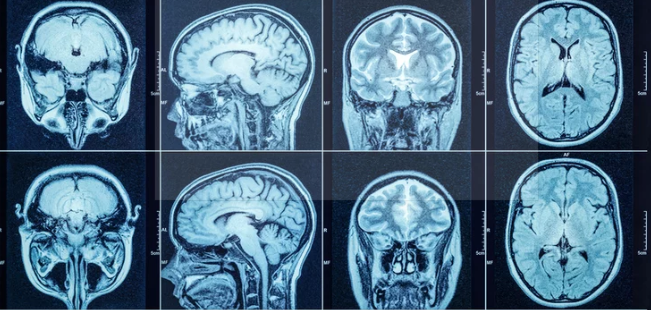Magnetic Resonance Imaging (MRI) and nuclear fusion might seem very different, but they share key magnetic technologies. Both rely on strong magnetic fields to work—MRI uses magnets to create detailed images of the body, while fusion reactors use powerful magnets to control hot plasma. The connection lies in their mastery of magnetic fields to manipulate atoms and particles safely and effectively.
The science behind both MRI and fusion involves understanding magnetic properties at the atomic level. MRI leverages the magnetic resonance of hydrogen protons in the body, while fusion uses magnetic confinement to control plasma for energy production. This overlap shows how advances in magnet technology can benefit both medical imaging and energy research.
Understanding this overlap highlights the importance of magnetic innovation across fields. It opens possibilities for new technologies that combine medical imaging methods with nuclear techniques, improving both healthcare and scientific research.
Key Takeways
- Magnetic fields are central to both MRI and nuclear fusion technologies.
- Manipulating atomic and subatomic particles is key in both applications.
- Advances in magnet technology help improve diverse scientific and medical tools.
Core Principles of Magnetic Resonance Imaging and Nuclear Fusion
Magnetic resonance imaging (MRI) and nuclear fusion both rely on precise control of magnetic fields. They use magnetism to influence particles at the atomic or subatomic level. This magnetic mastery enables MRI to image soft tissues, while fusion reactors contain ultra-hot plasma for energy production.
Fundamental Magnetism in MRI and Fusion
MRI works by aligning the spins of hydrogen nuclei in the human body using a strong magnetic field. When subjected to a radiofrequency pulse, these nuclei absorb and then release energy, producing signals that create detailed images of tissues.
In nuclear fusion, magnets influence charged particles like ions and electrons in plasma. The magnetic fields keep these particles confined without touching the reactor walls, essential for maintaining the high temperatures needed for fusion reactions.
Both systems depend on magnetic spin and resonance phenomena, but MRI targets atomic nuclei specifically, while fusion deals with plasma made of ionized gases.
Magnetic Confinement Techniques
MRI uses uniform magnetic fields combined with gradient fields. These gradients help locate the signals in space, allowing clear, sliced images to be formed through spatial encoding.
Fusion reactors, such as tokamaks and stellarators, use complex magnetic fields shaped into toroidal (doughnut) forms. This trapped plasma is kept stable and away from reactor walls by magnetic confinement, preventing heat loss and damage.
Key differences include MRI’s focus on imaging microscopic structures versus fusion’s role in containing extremely hot matter for continuous energy generation.
Role of Superconductors
Superconducting magnets play a vital role in both MRI and fusion. In MRI, superconducting coils create very strong, stable magnetic fields necessary for high-resolution imaging without large energy loss.
In fusion, superconductors enable powerful magnetic fields over large volumes needed to contain plasma at millions of degrees. They are cooled to very low temperatures, reducing electrical resistance and allowing extended operation.
These superconductors improve efficiency and performance, making both MRI scans and fusion energy experiments more practical and reliable.
Technological and Theoretical Overlap
Magnetic Resonance Imaging (MRI) and nuclear fusion both rely heavily on precise magnetic field control and advanced physics principles. Their shared use of strong magnetic fields for different purposes reveals a connection rooted in magnetic engineering and ongoing innovation. The fields face unique challenges but also explore similar technological paths.
Shared Magnetic Field Engineering
Both MRI and nuclear fusion depend on controlling intense magnetic fields to manipulate charged particles. MRI uses strong magnets, often superconducting, to align hydrogen nuclei in the body for imaging. Nuclear fusion reactors use powerful magnetic fields to confine hot plasma, keeping it stable and away from reactor walls.
The strength and uniformity of these magnetic fields are critical to their success. In MRI, field strength affects image quality and signal-to-noise ratio. In fusion, it impacts plasma confinement and energy efficiency. Both fields rely on advances in superconducting magnet technology and field optimization to push their boundaries.
Cross-Disciplinary Innovations
Technological progress in one domain often inspires improvements in the other. For example, MRI pulse sequence techniques refine spatial resolution and tissue contrast, concepts linked to precision timing and control used in fusion diagnostics. Similarly, fusion research develops high-temperature superconductors that could enhance MRI magnet performance.
Both fields also use advanced computational models to predict magnetic field behavior. These models help design better coils and optimize field distributions. Shared advances in materials science, cryogenics, and sensor technology enable new capabilities in medical imaging and fusion experimentation.
Challenges and Future Possibilities
Both MRI and nuclear fusion face engineering challenges related to magnetic field generation and stability. MRI systems strive to increase field strength safely while managing patient comfort and machine costs. Fusion devices must maintain plasma confinement at extremely high temperatures without magnetic field degradation.
Future possibilities include the development of compact, high-field magnets that could revolutionize both fields. Breakthroughs in superconducting materials or magnetic coil design may increase MRI imaging speeds and enable more efficient fusion reactors. Collaborative research across these areas remains vital for advancing magnetic technology.
Also Read :
